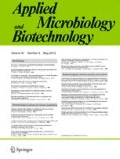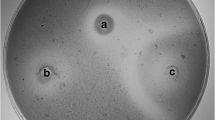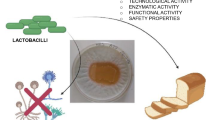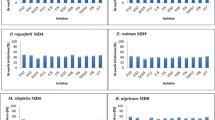Abstract
Sourdough lactic acid bacteria, cultivated in wheat flour hydrolysate, produced antimould compounds. The antimould activity varied greatly among the strains and was mainly detected within obligately heterofermentative Lactobacillus spp. Among these, Lb. sanfrancisco CB1 had the largest spectrum. It inhibited moulds related to bread spoilage such as Fusarium, Penicillium, Aspergillus and Monilia. A mixture of acetic, caproic, formic, propionic, butyric and n-valeric acids, acting in a synergistic way, was responsible for the antimould activity. Caproic acid played a key role in inhibiting mould growth.
Similar content being viewed by others
Author information
Authors and Affiliations
Additional information
Received: 20 January 1998 / Received revision: 17 April 1998 / Accepted: 27 April 1998
Rights and permissions
About this article
Cite this article
Corsetti, A., Gobbetti, M., Rossi, J. et al. Antimould activity of sourdough lactic acid bacteria: identification of a mixture of organic acids produced by Lactobacillus sanfrancisco CB1. Appl Microbiol Biotechnol 50, 253–256 (1998). https://doi.org/10.1007/s002530051285
Issue Date:
DOI: https://doi.org/10.1007/s002530051285




